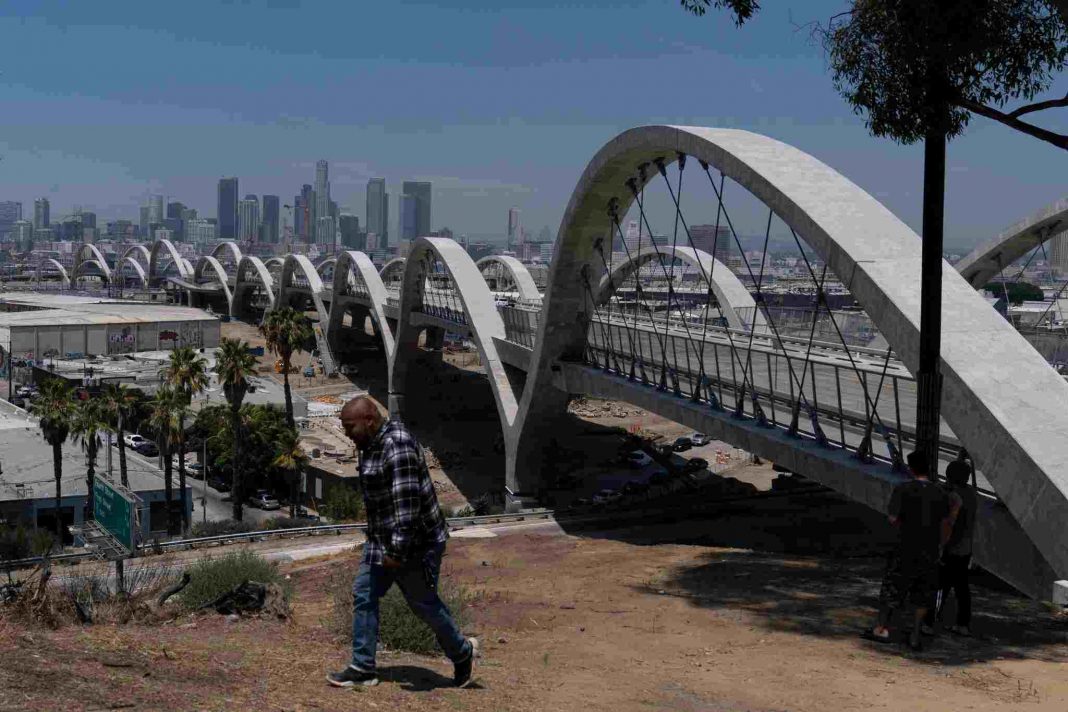To much excitement, the city’s newest bridge, a $588 million architectural wonder with vistas of downtown Los Angeles, debuted on July 10th. Since then, it has been shut down multiple times, to the dismay of many, due to disorder and collisions.
Street racing, graffiti, and illegal takeovers have turned the 6th Street Viaduct into a hotspot for hundreds of onlookers eager to witness drivers execute risky feats in their cars as they fly over the concrete-lined Los Angeles River.
Social media pranks abound; one guy had his hair trimmed while sitting in the midst of the lanes on a barber chair. In addition, there have been an increasing number of collisions, such as a three-car incident in which one driver fled the scene after leaving his white Dodge Challenger as part of a street takeover. Eventually, he surrendered.
In the latest action, LAPD said Tuesday that the bridge would be “closed until further notice due to criminal activities and public safety concerns” before reversing and reinstating it only hours later, reports the LA Times.
Officials seek to reduce reckless driving by adding speed bumps, safety barriers, and cameras to the newly constructed bridge. Impounding automobiles and imposing fines are taking place as the investigation continues.
Having these kinds of qualities and being able to maintain and appreciate them is something we want to demonstrate to the world as a world-class city.
In the tallest and most costly bridge ever constructed in Los Angeles, the 3,500-foot (1,066-meter) bridge connects the trendy Arts District to the historically working-class Latino community of Boyle Heights.
Replacement for an Art Deco bridge that was in use for 84 years, it has been dubbed the “Ribbon of Light” for its LED lights and slanted arches, which have already attracted daring walkers and skateboarders. After decades of chemical reactions weakening its concrete, the building featured in several Hollywood films, including “Grease” and “Terminator 2,” was destroyed in 2016.
During its inaugural weekend, Mayor Eric Garcetti referred to the new bridge as “our generation’s love letter to the city.”
Harrison Wollman, Garcetti’s press secretary, stated, “While the Mayor knows that the celebration of this bridge is largely positive, he has no tolerance for conduct that inhibits Angelenos from enjoying this beautiful monument.”
According to John Yi, the executive director of pedestrian advocacy group Los Angeles Walks, the bridge was not designed with pedestrian and bicycle safety in mind. The absence of a central median, for example, is now being discussed.
City authorities are trying to shift the conversation away from infrastructure issues and toward street racing and other risk-takers, Yi said.
This is the message the city wants to tell the public: This is not our responsibility, this is theirs,” he said.
Even before construction of the bridge had begun Yi predicted that people would use it in this way: “If you create a concrete jungle gym, then that’s how people would utilise it.”

